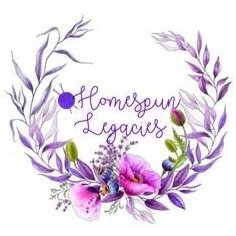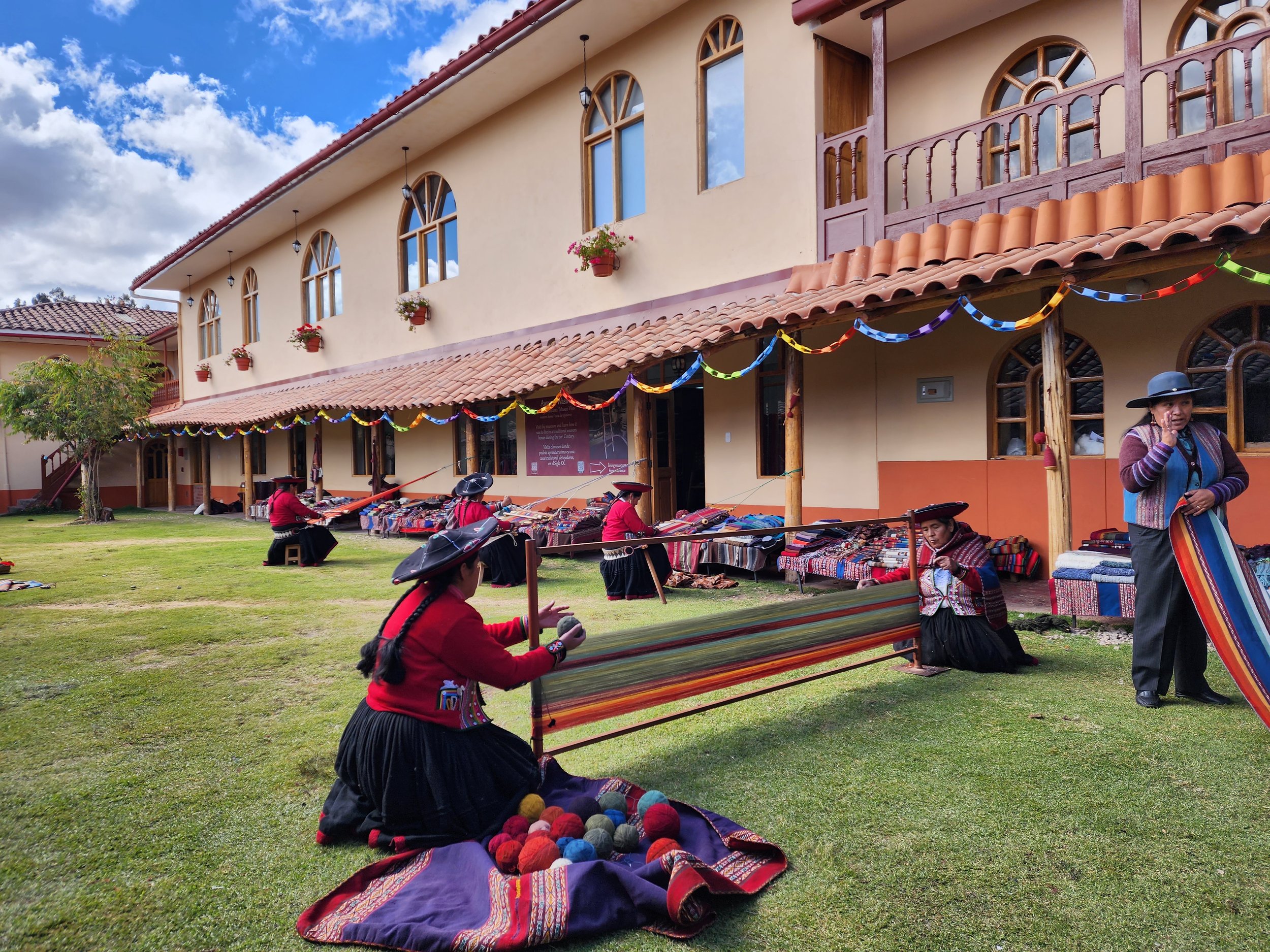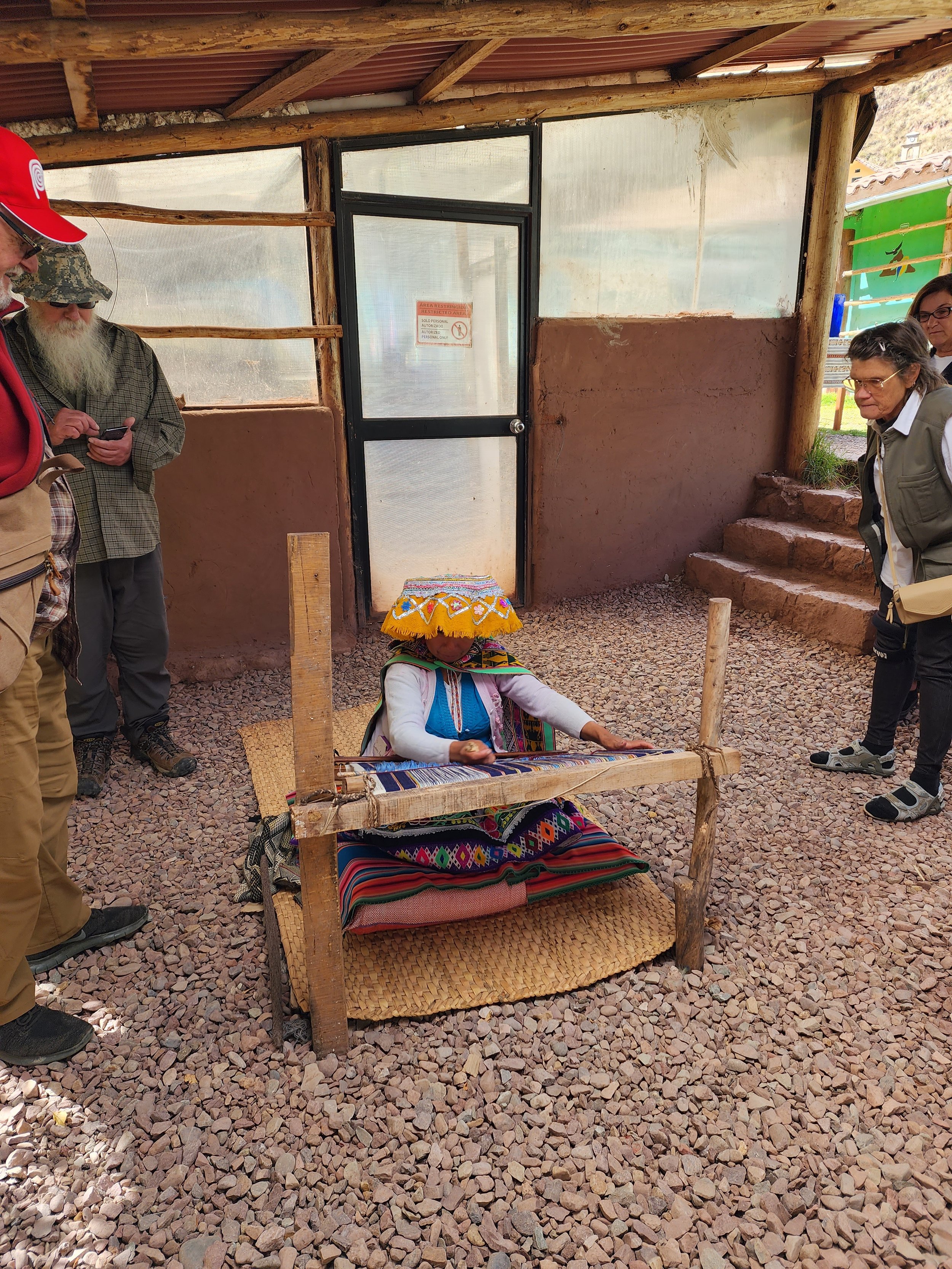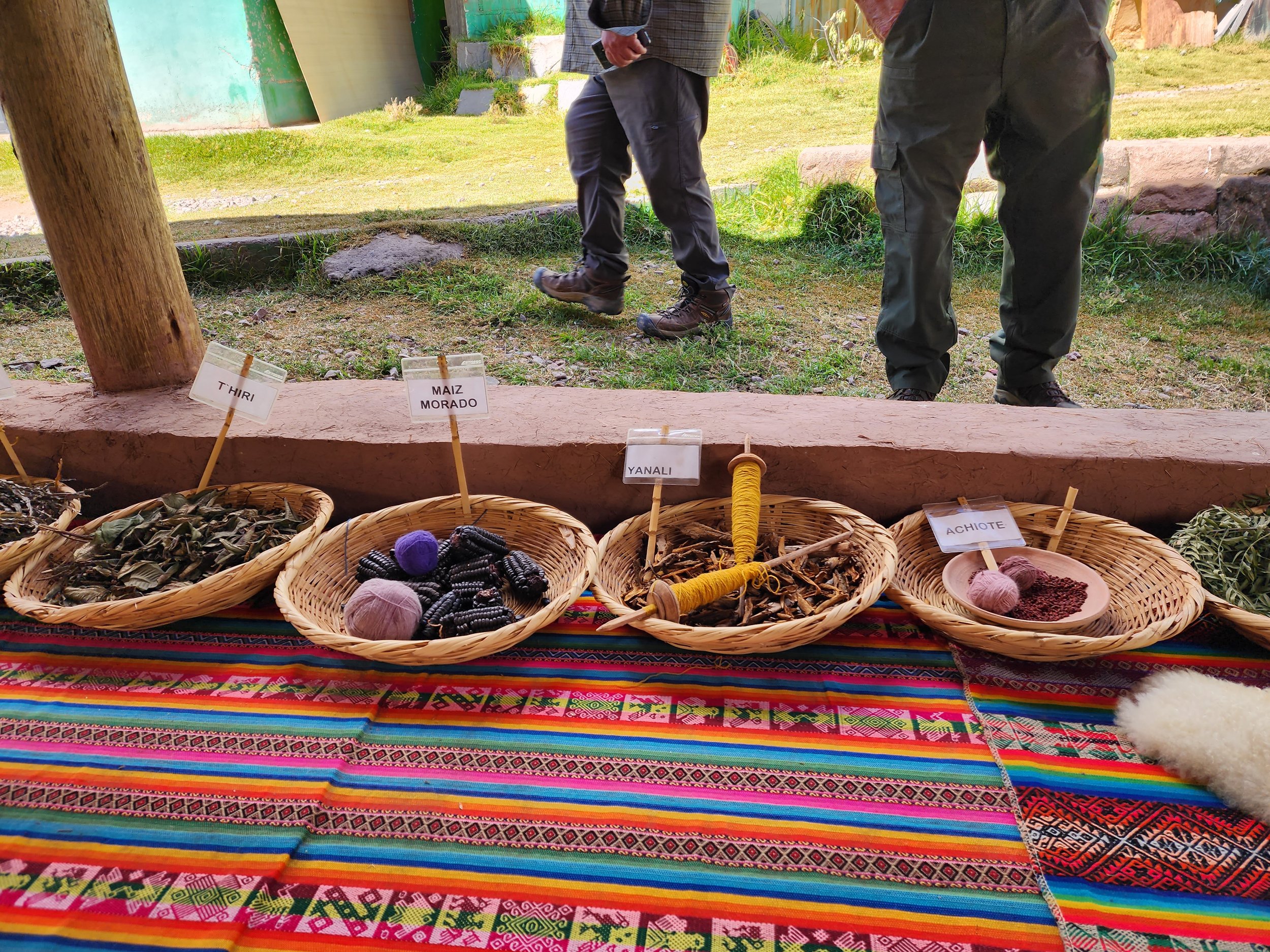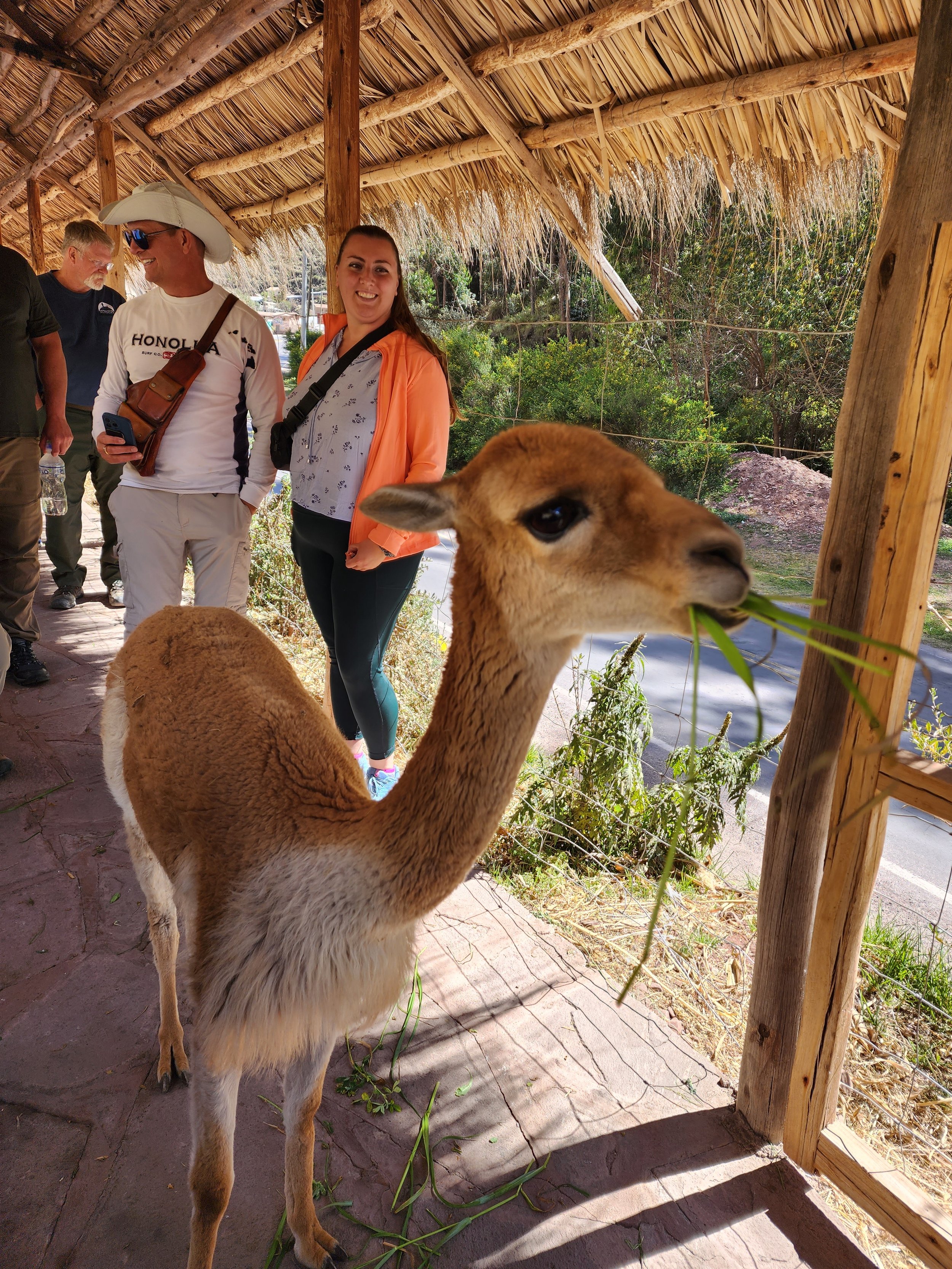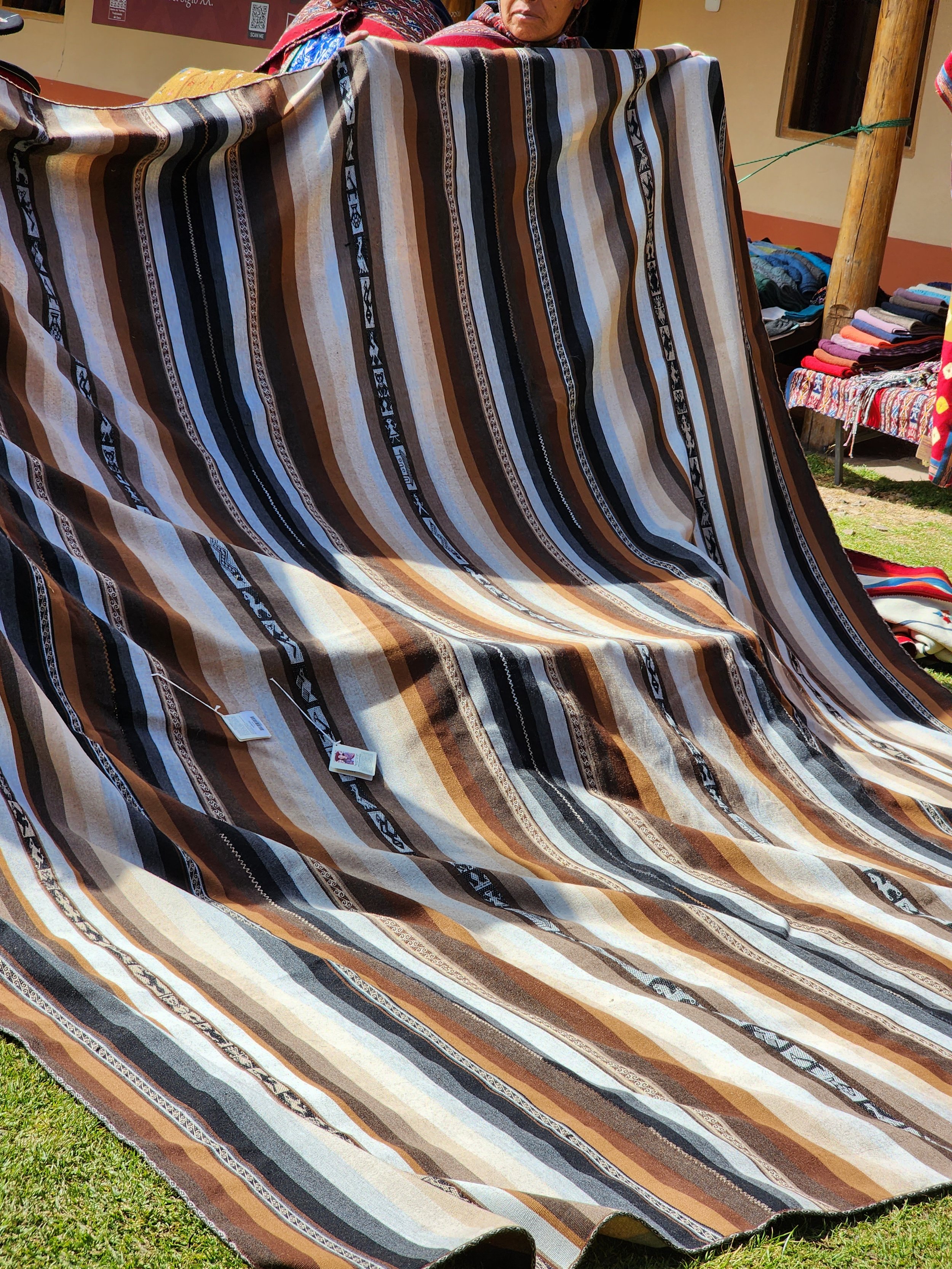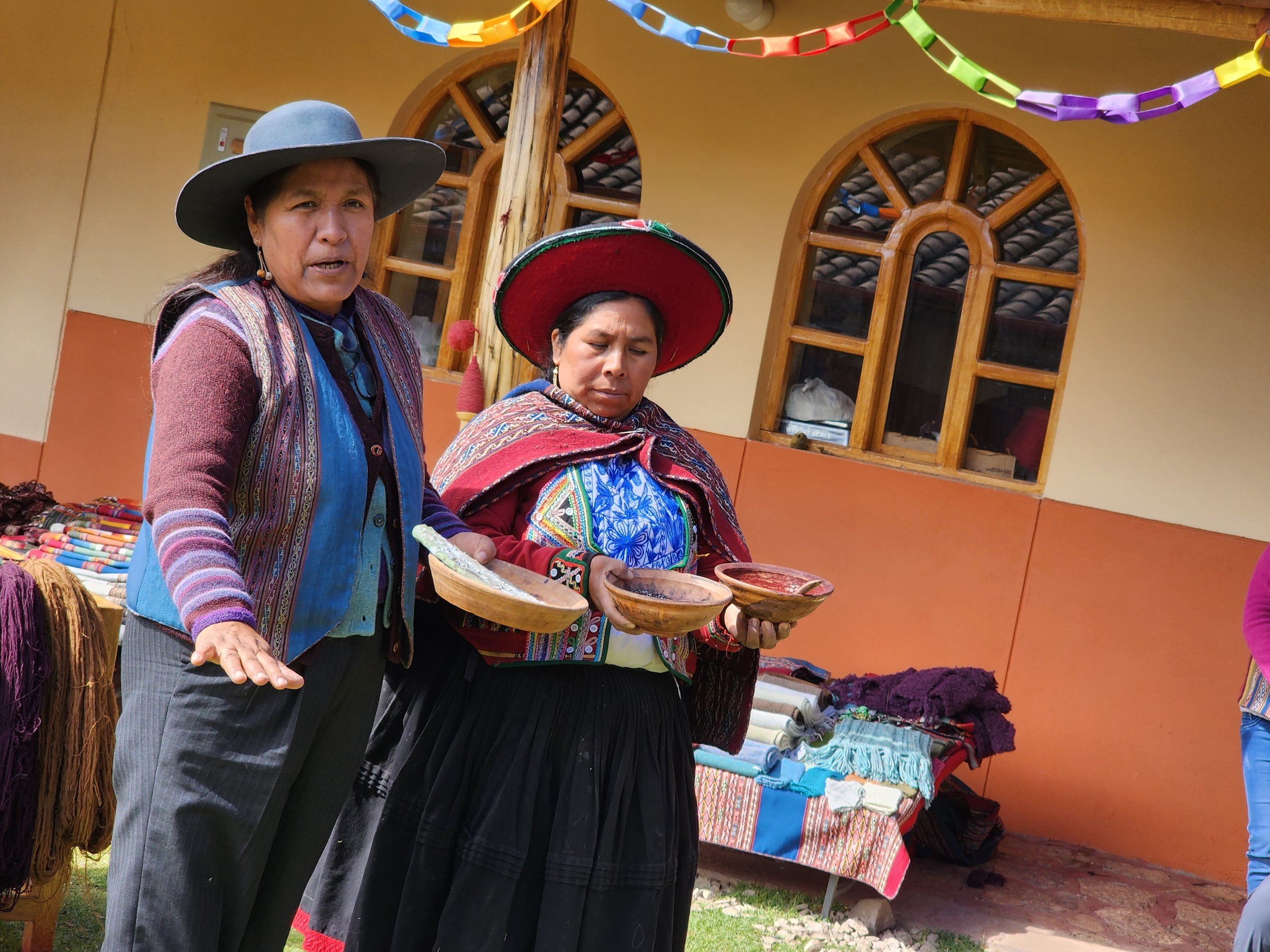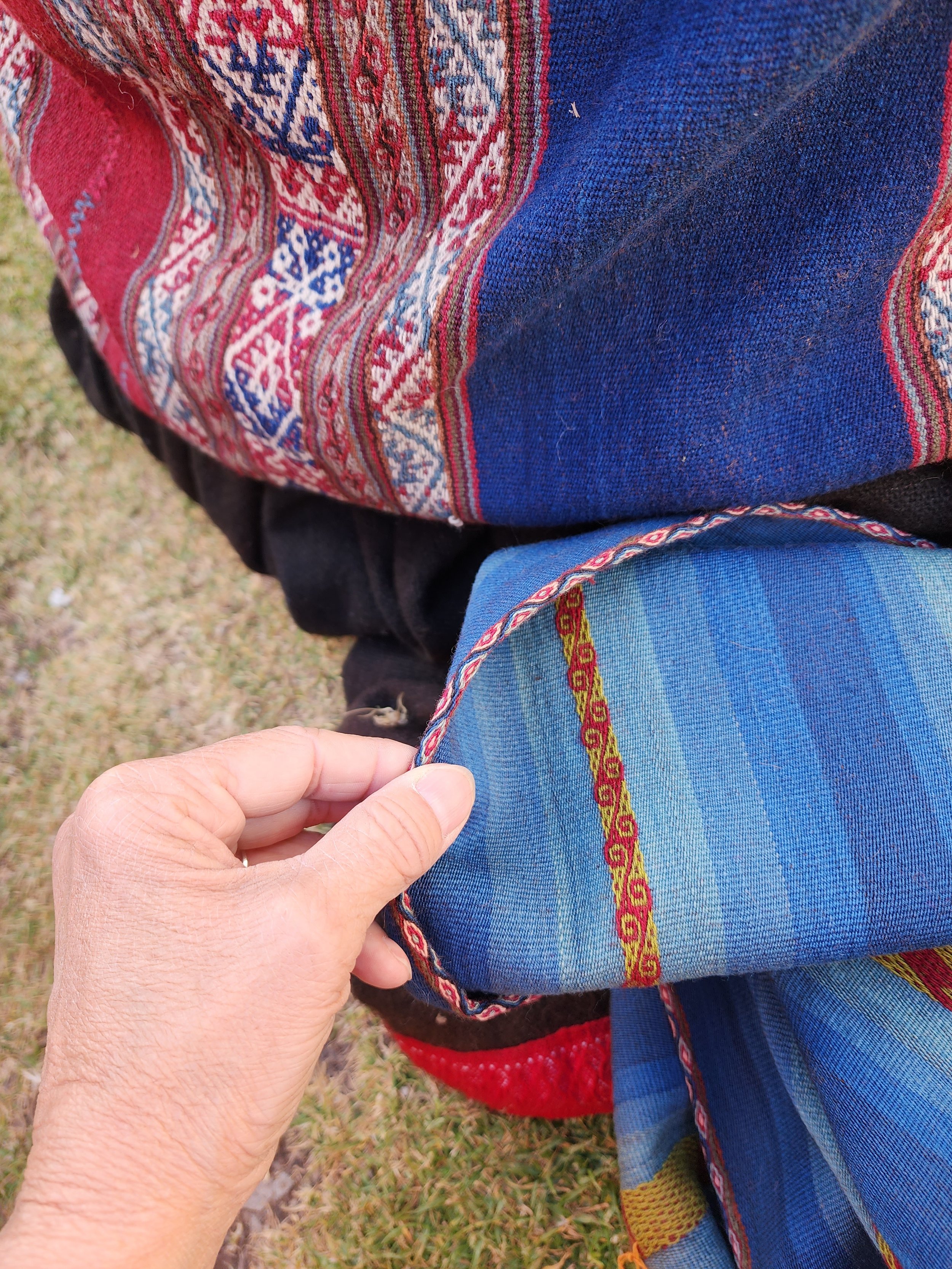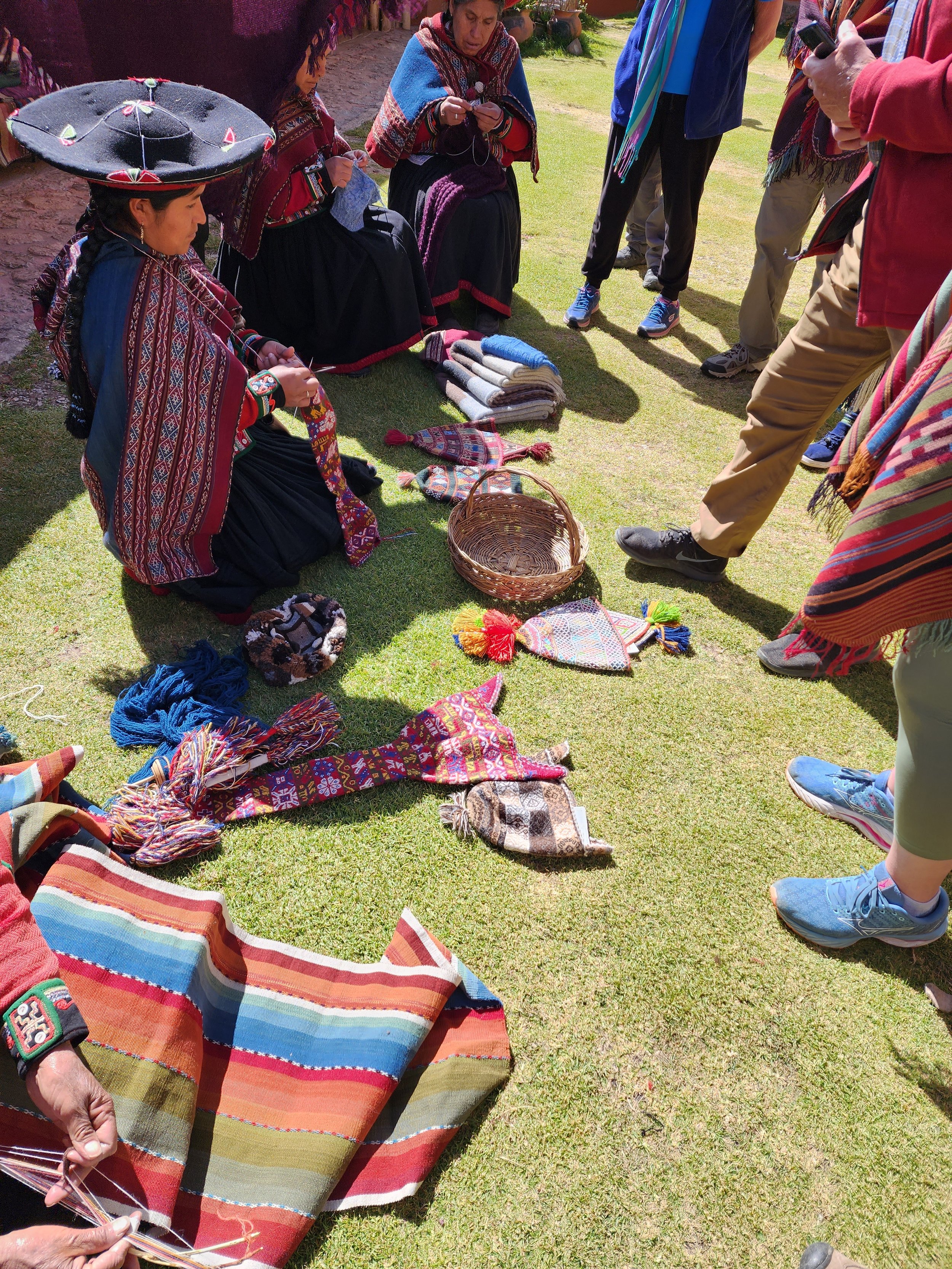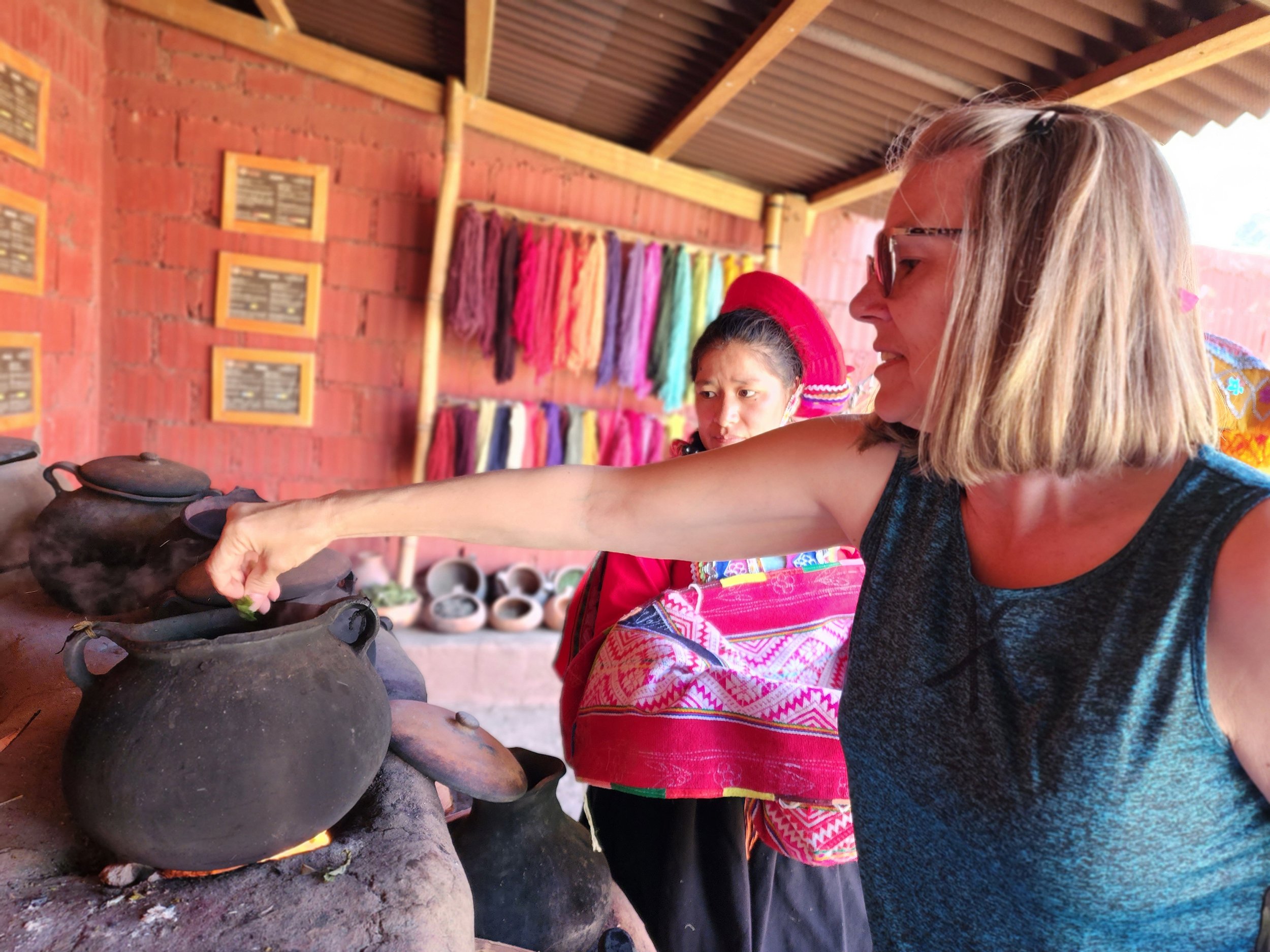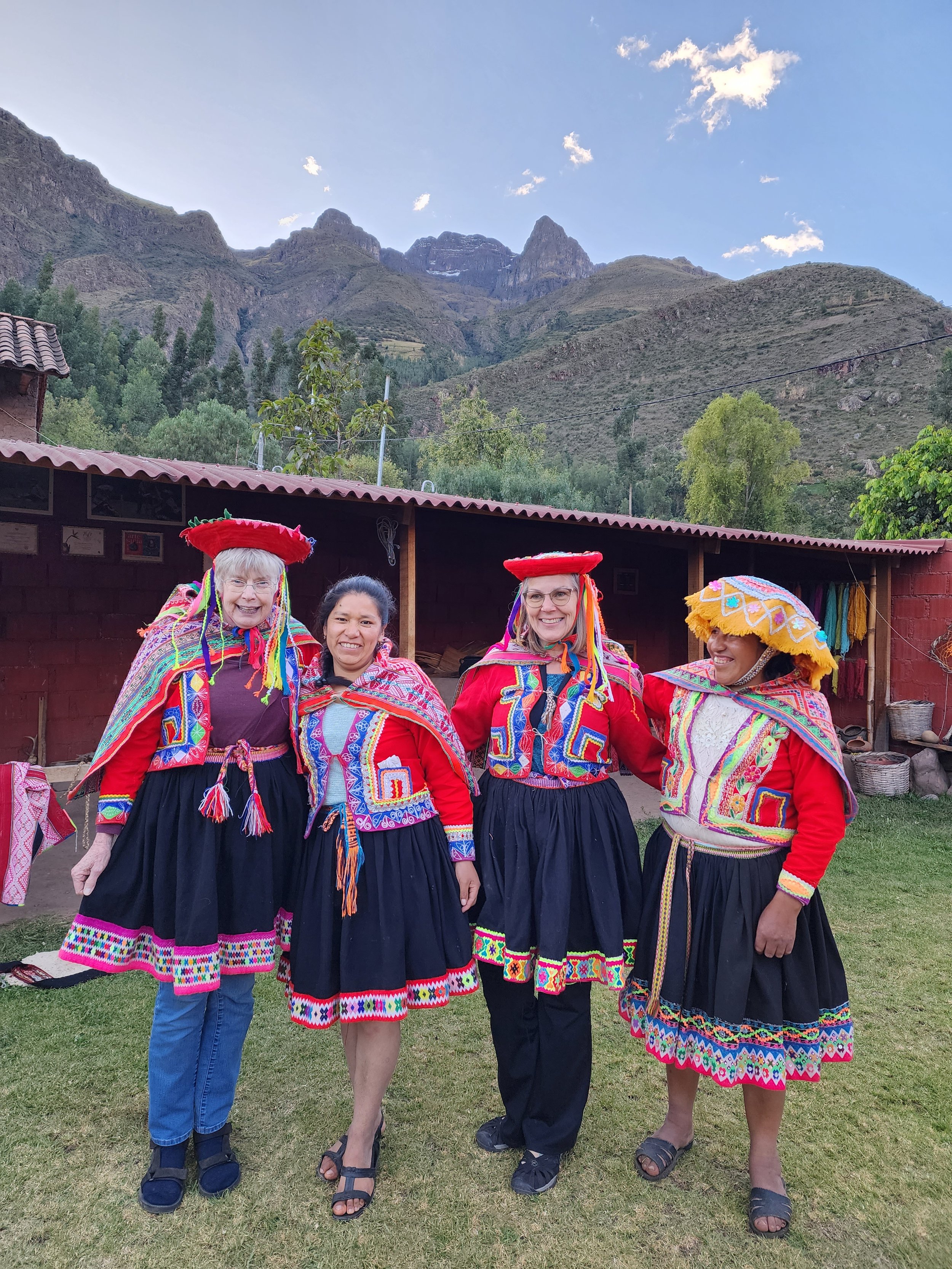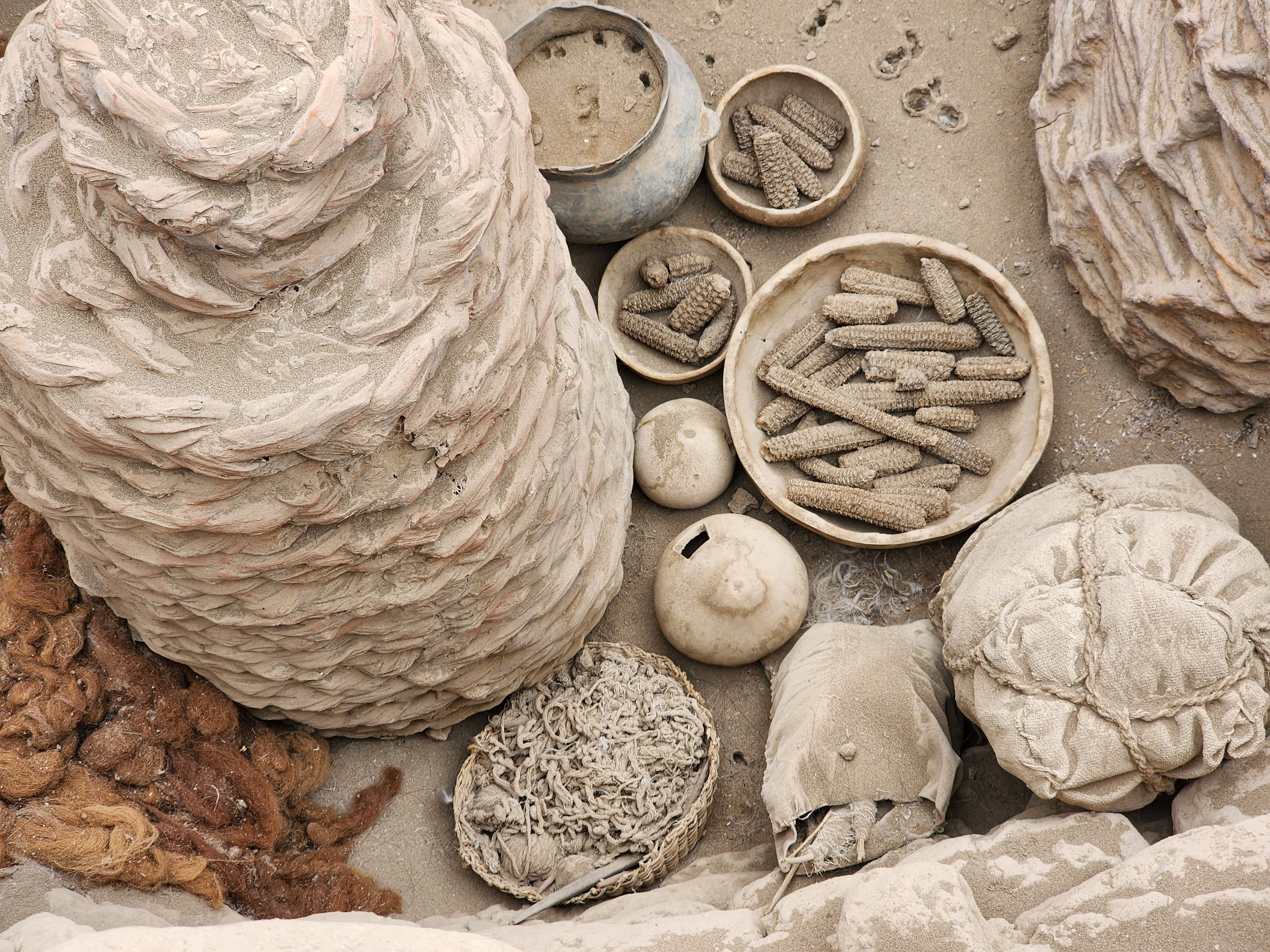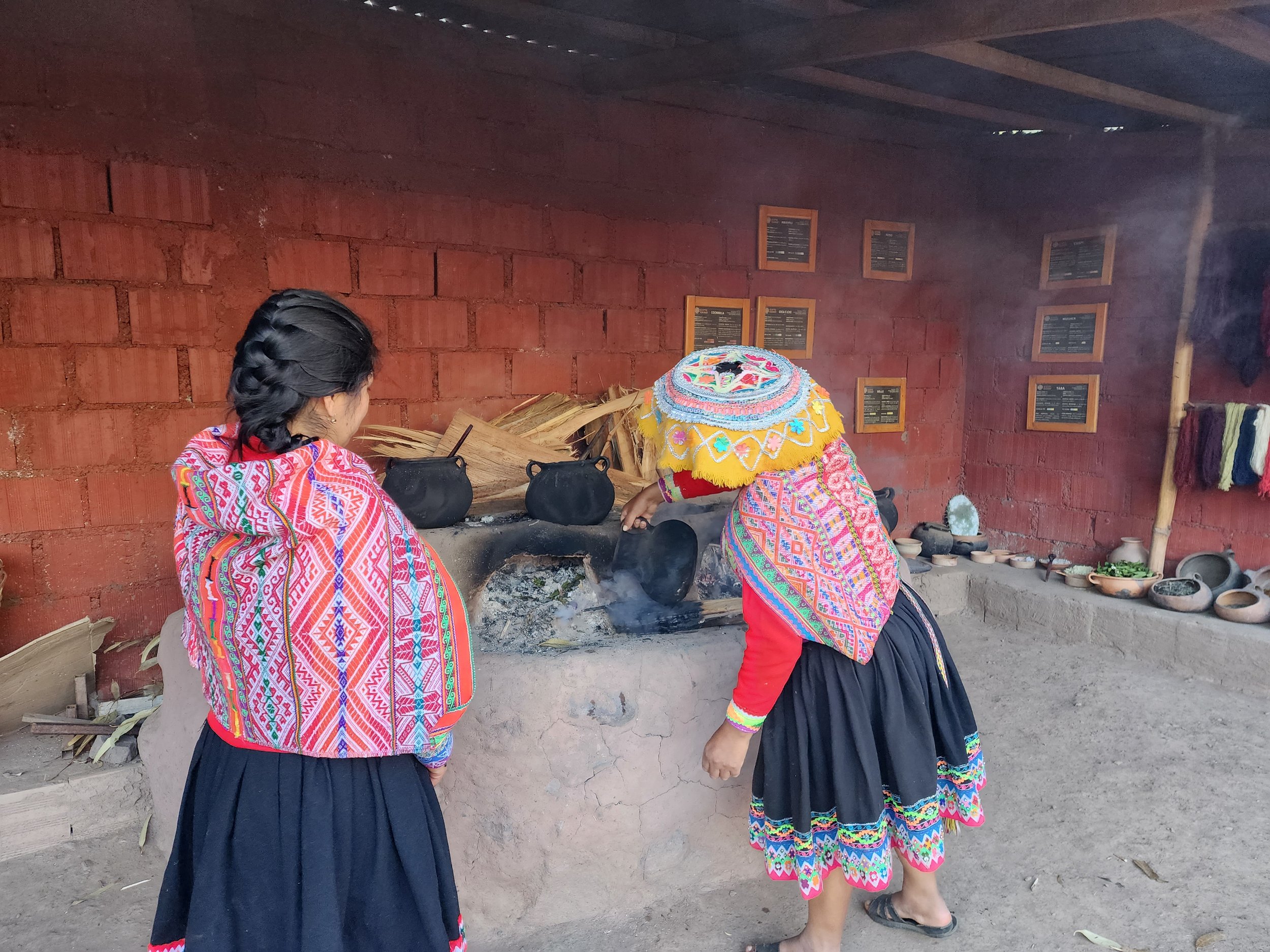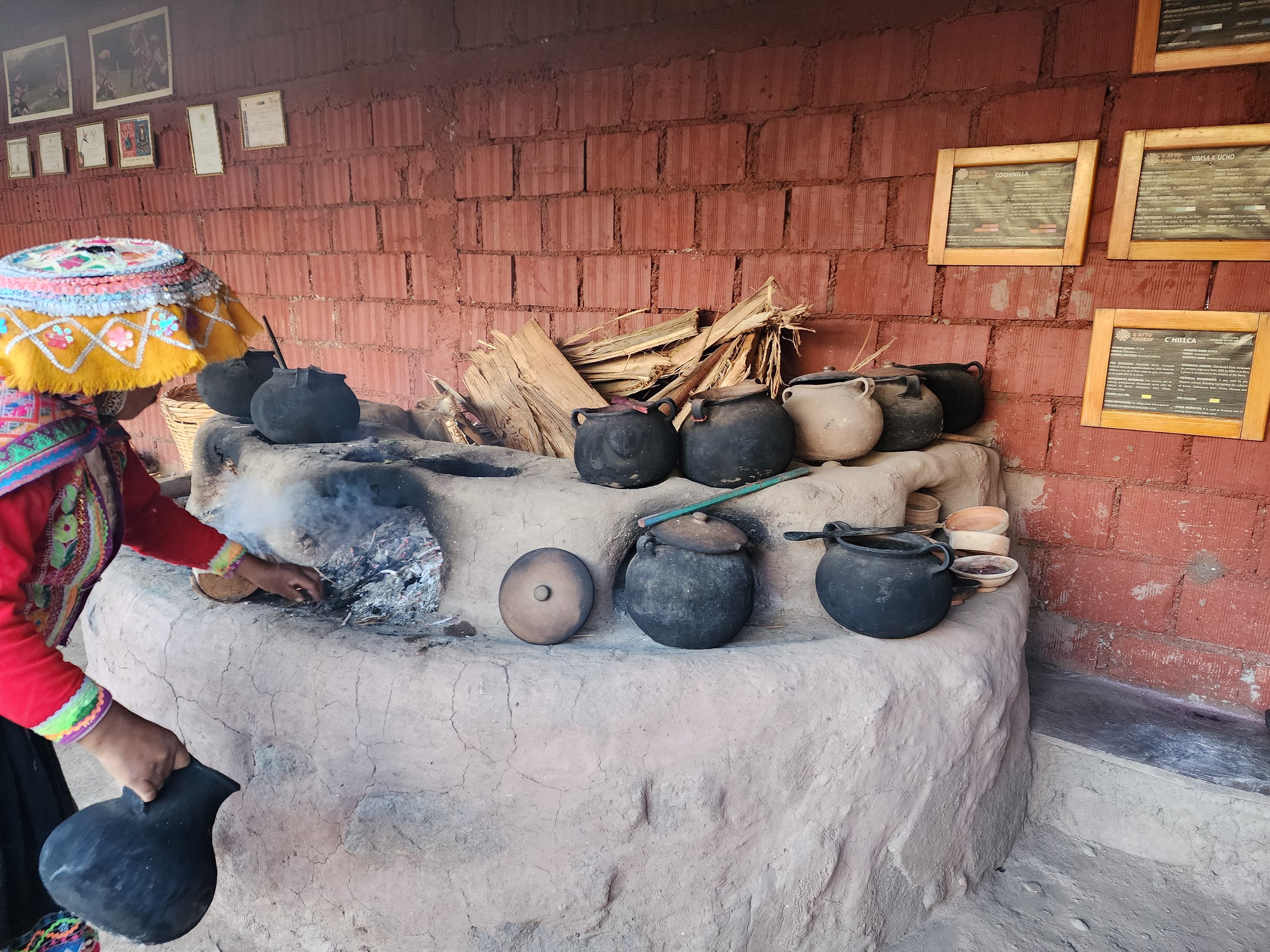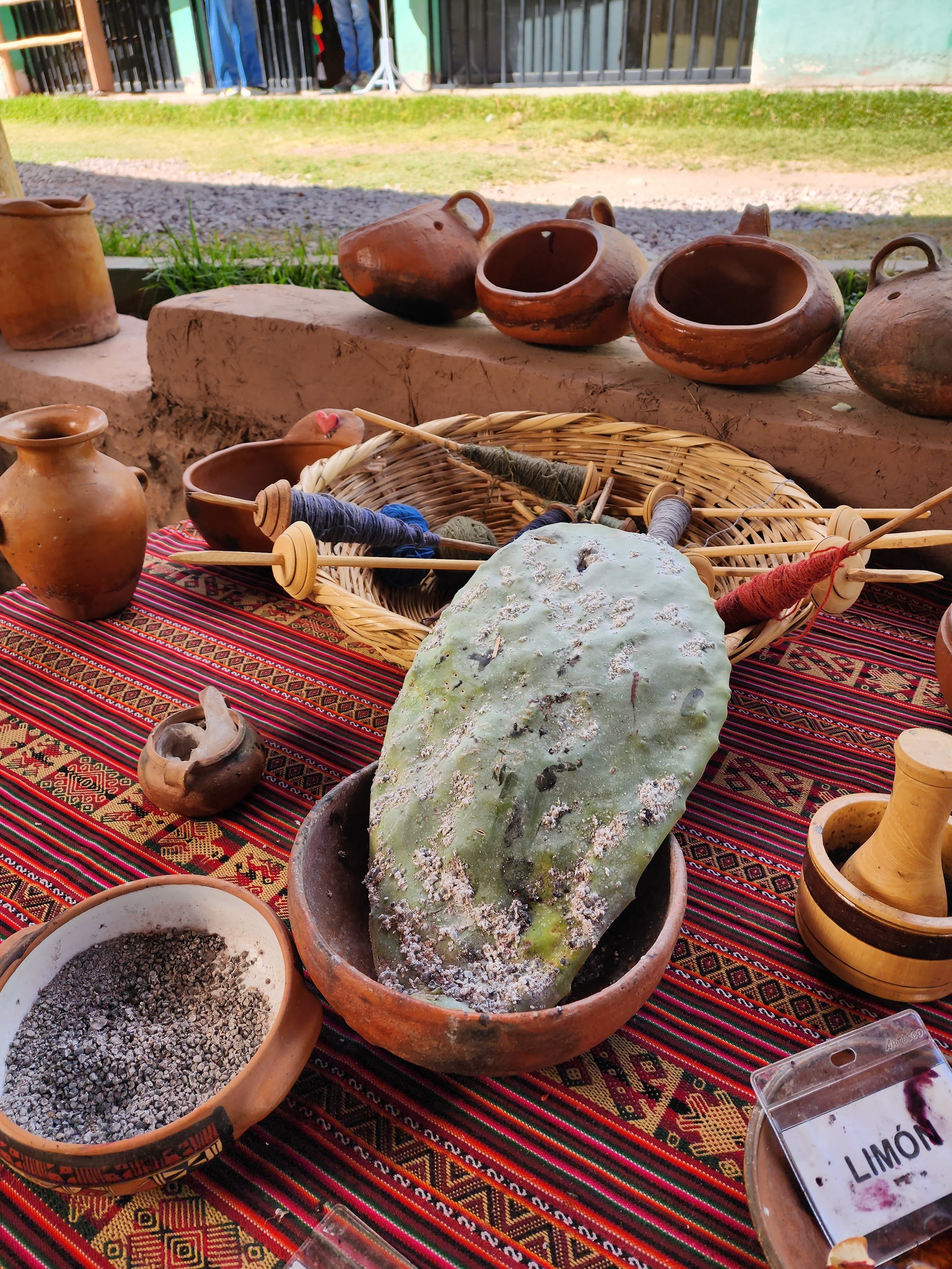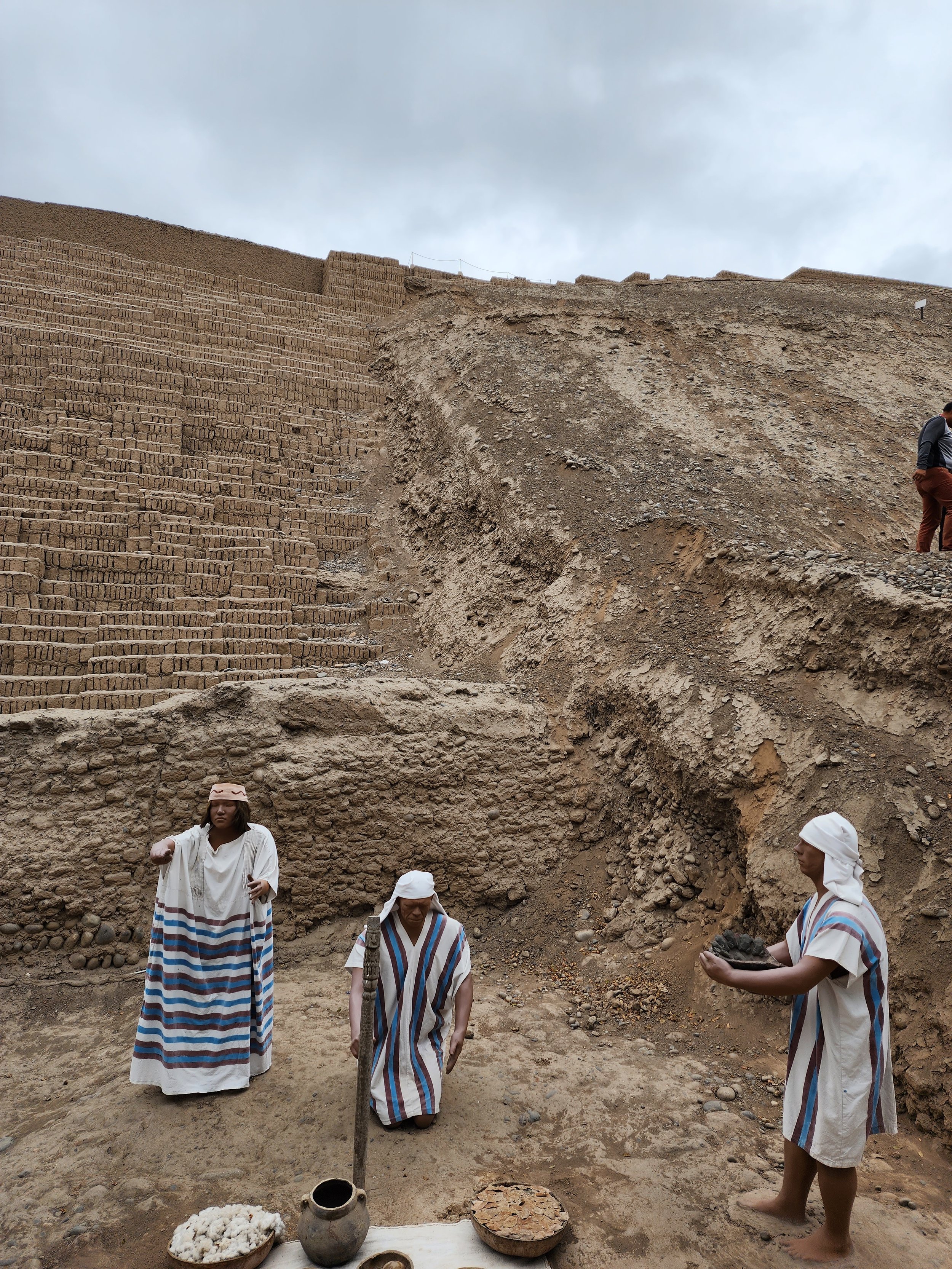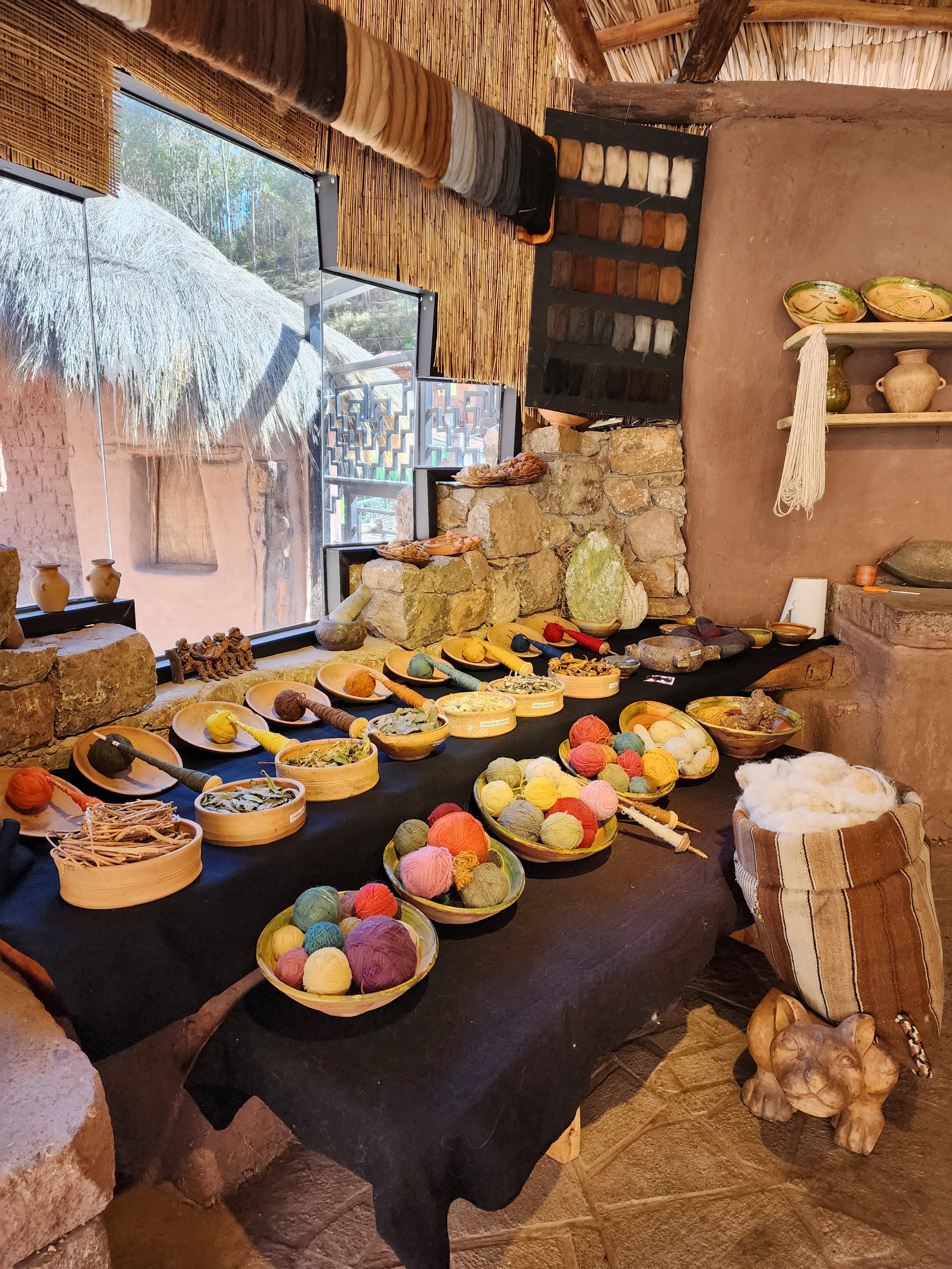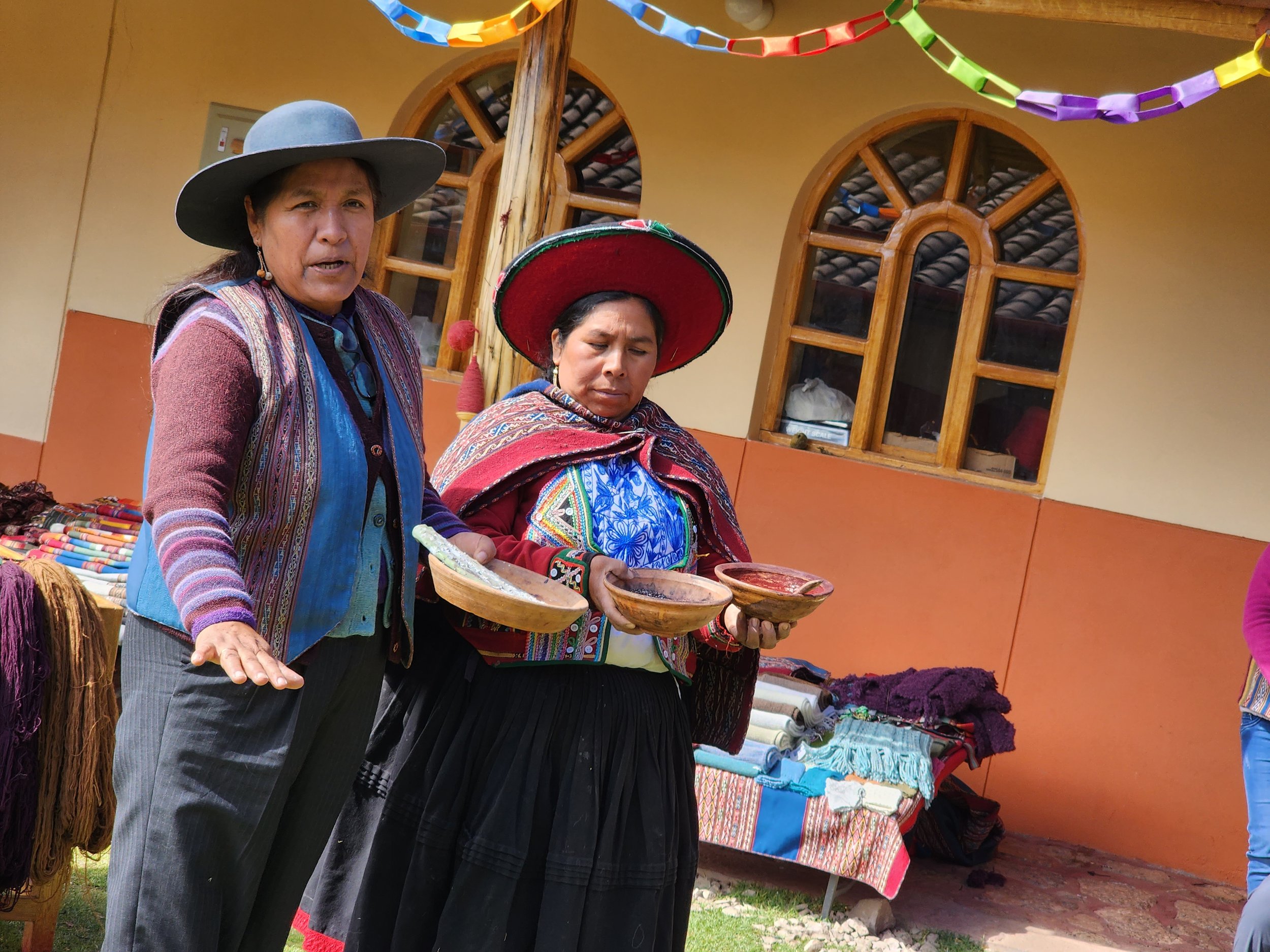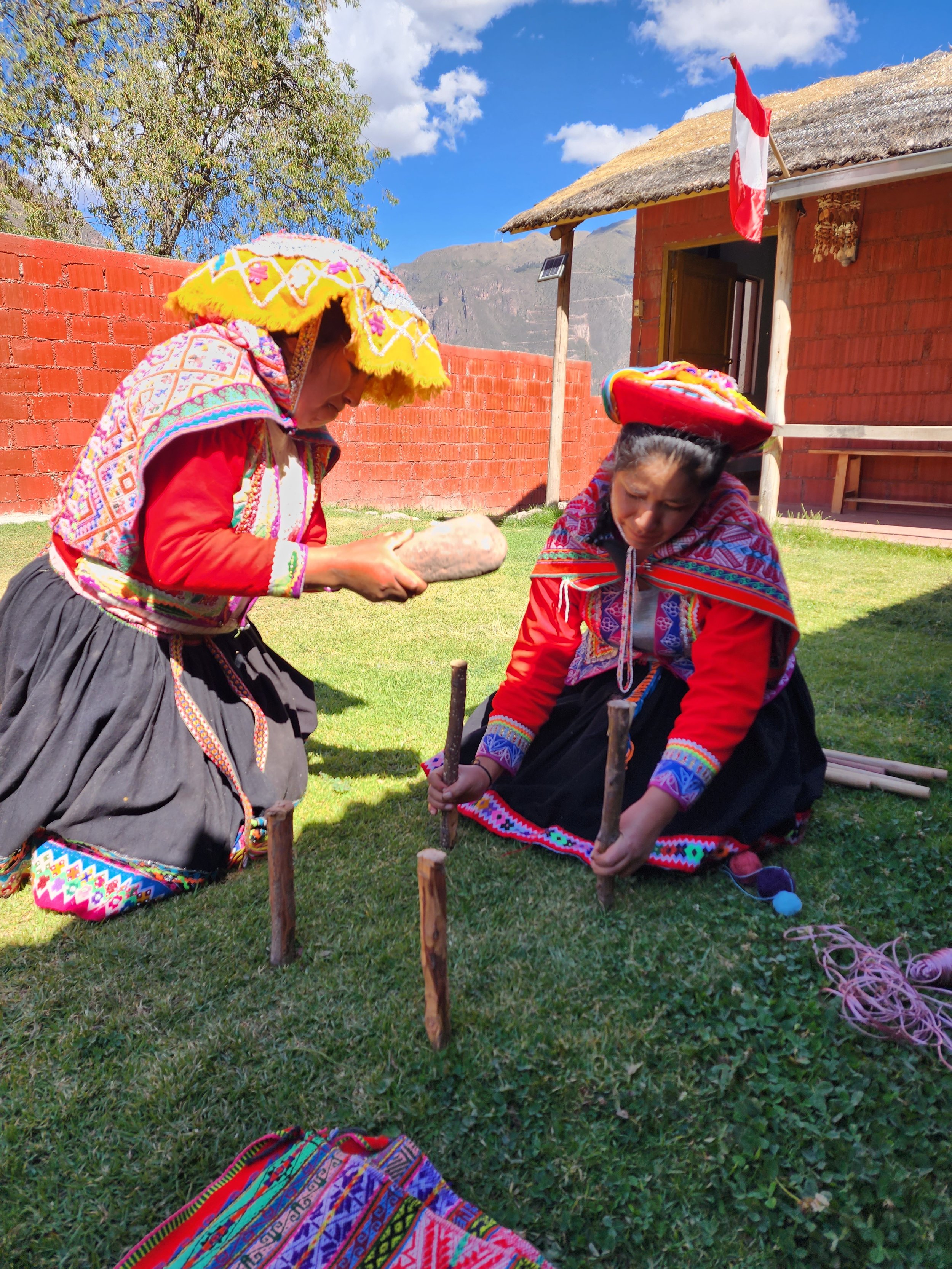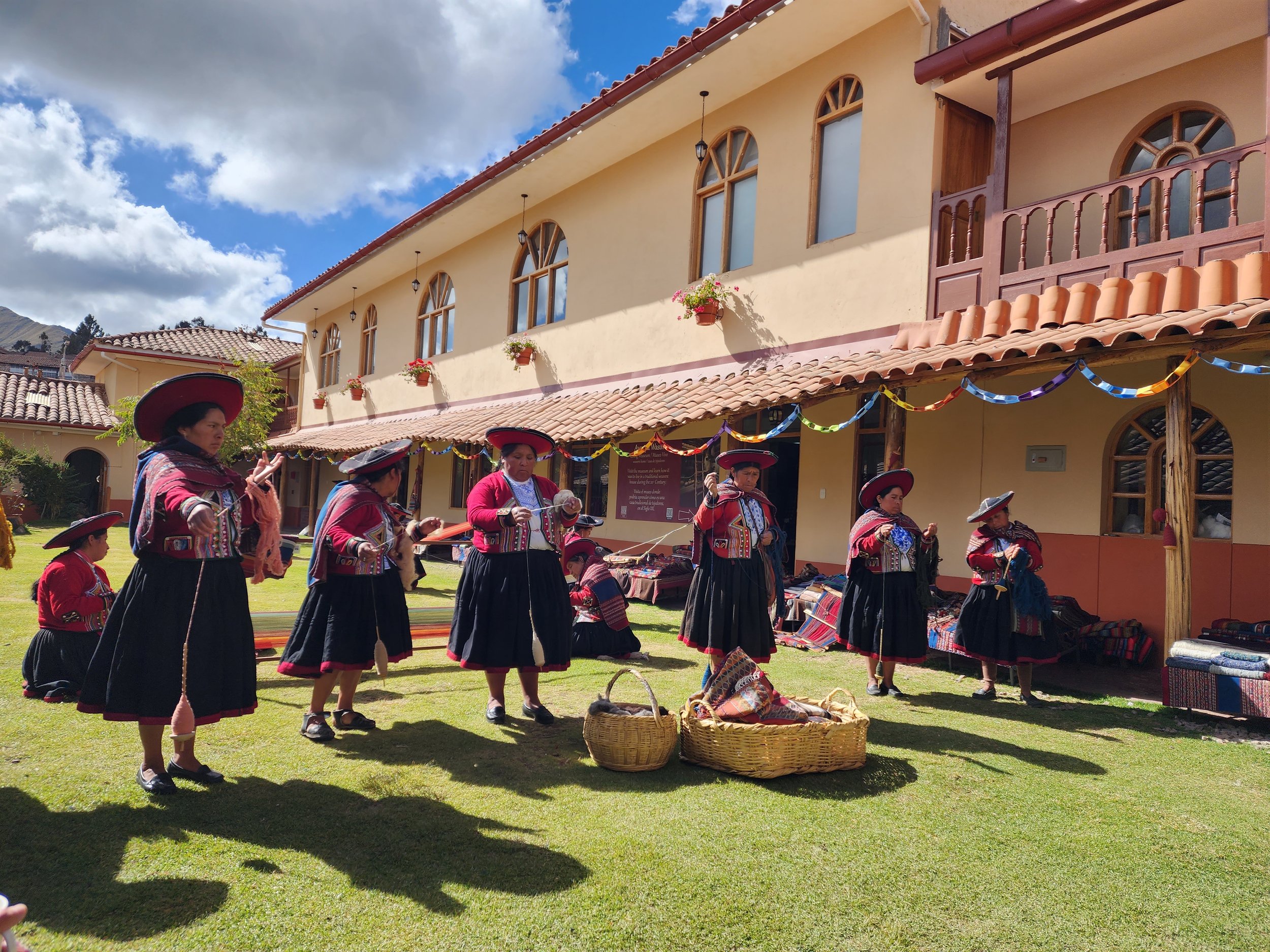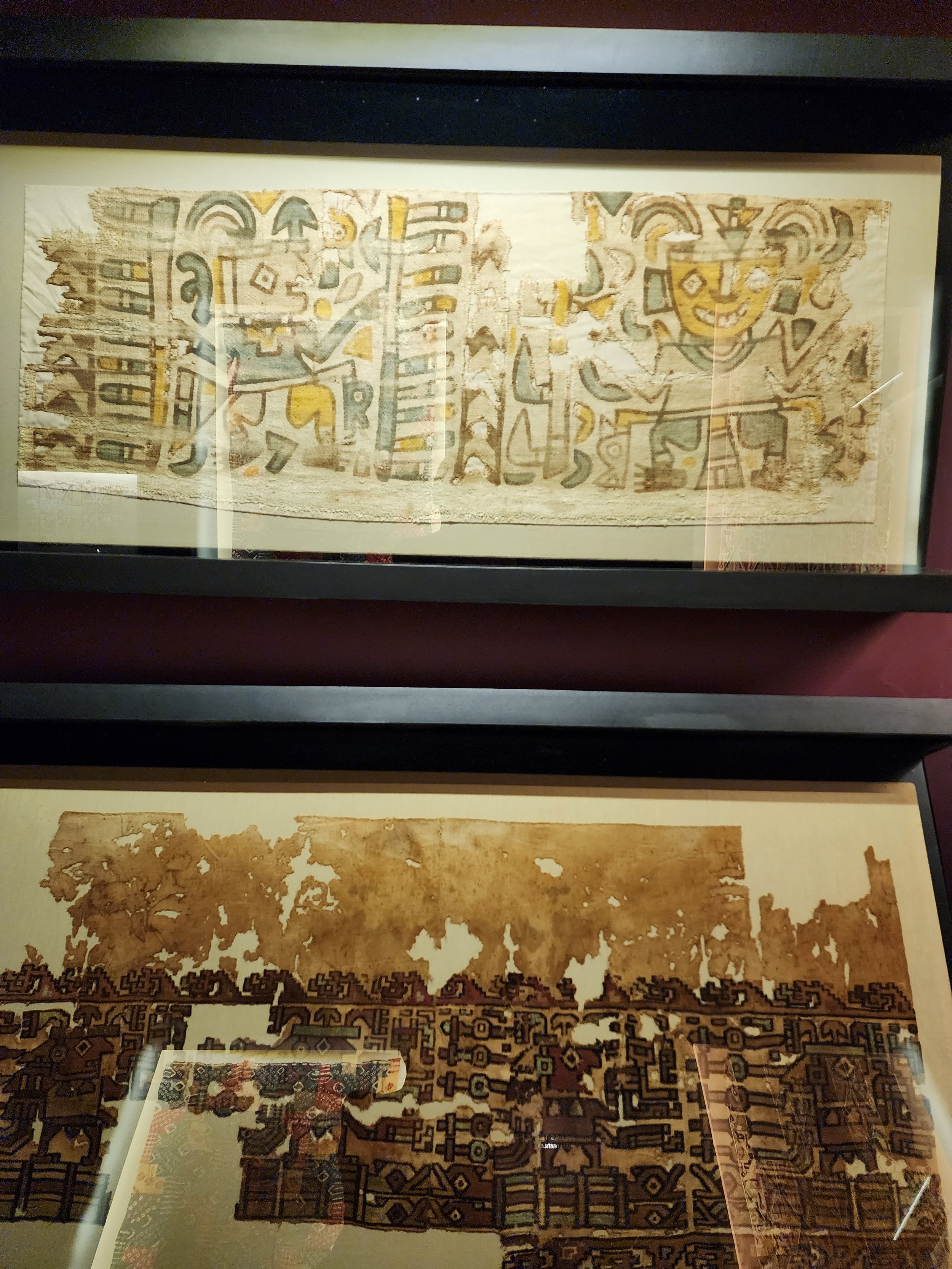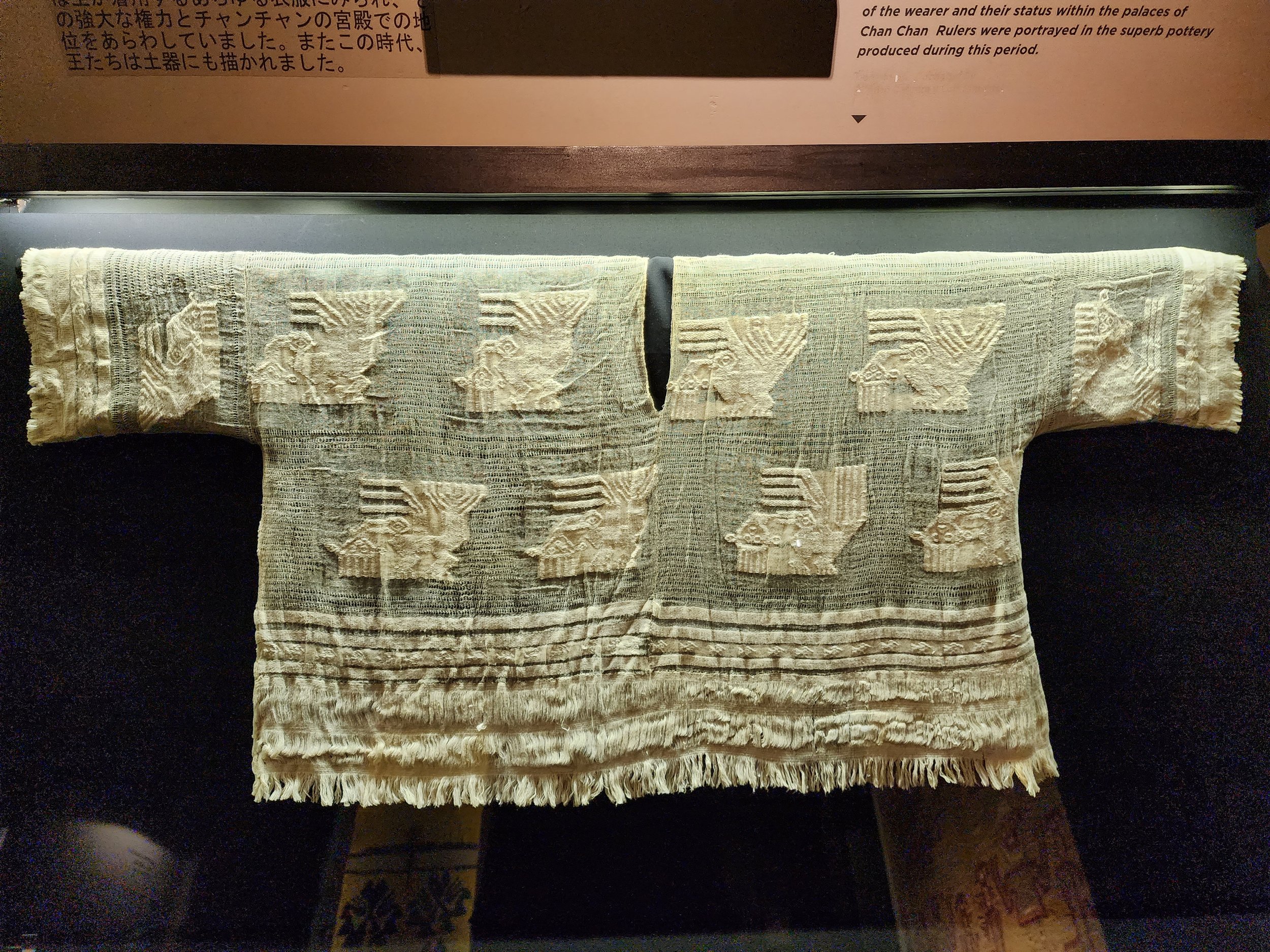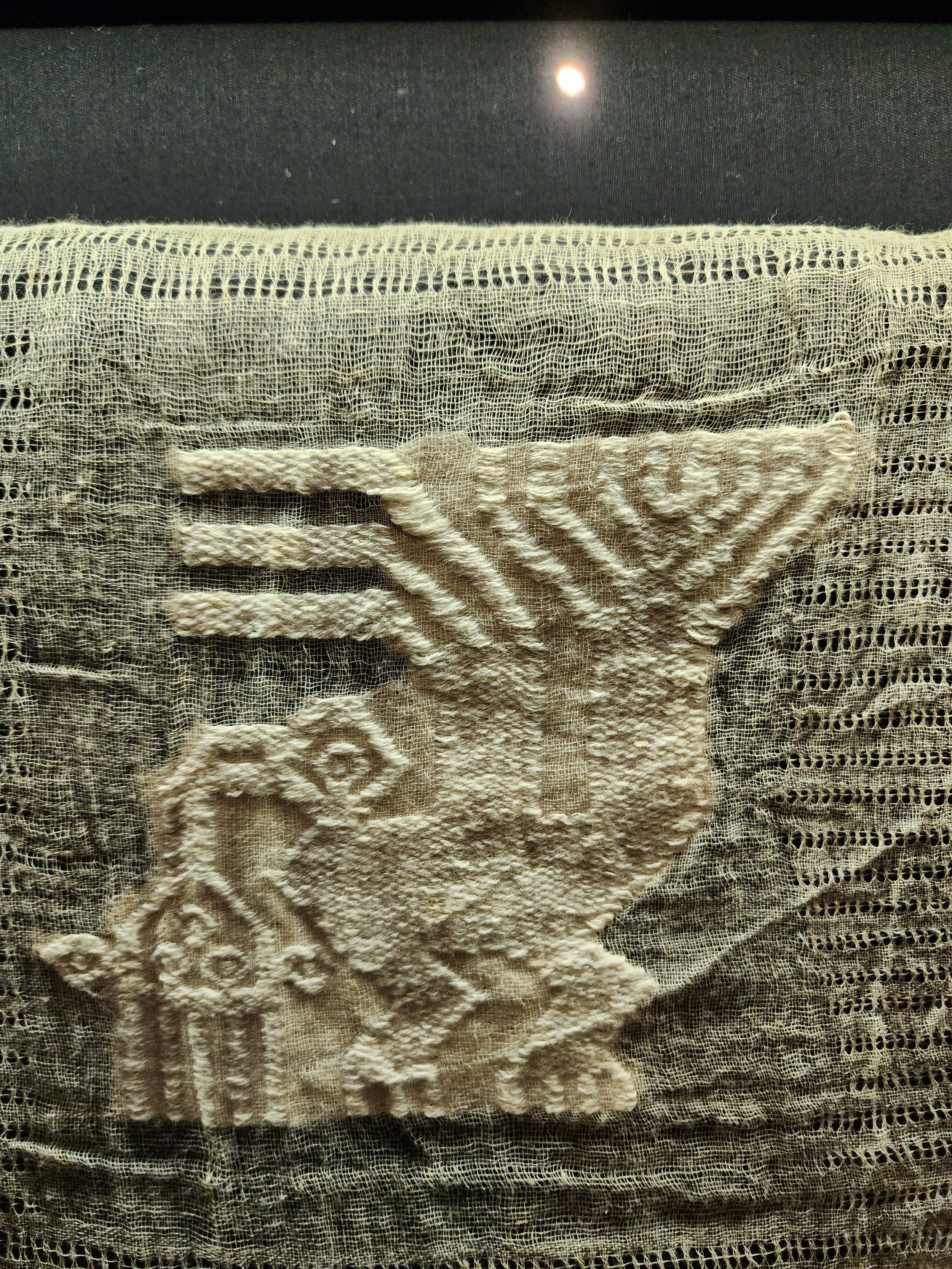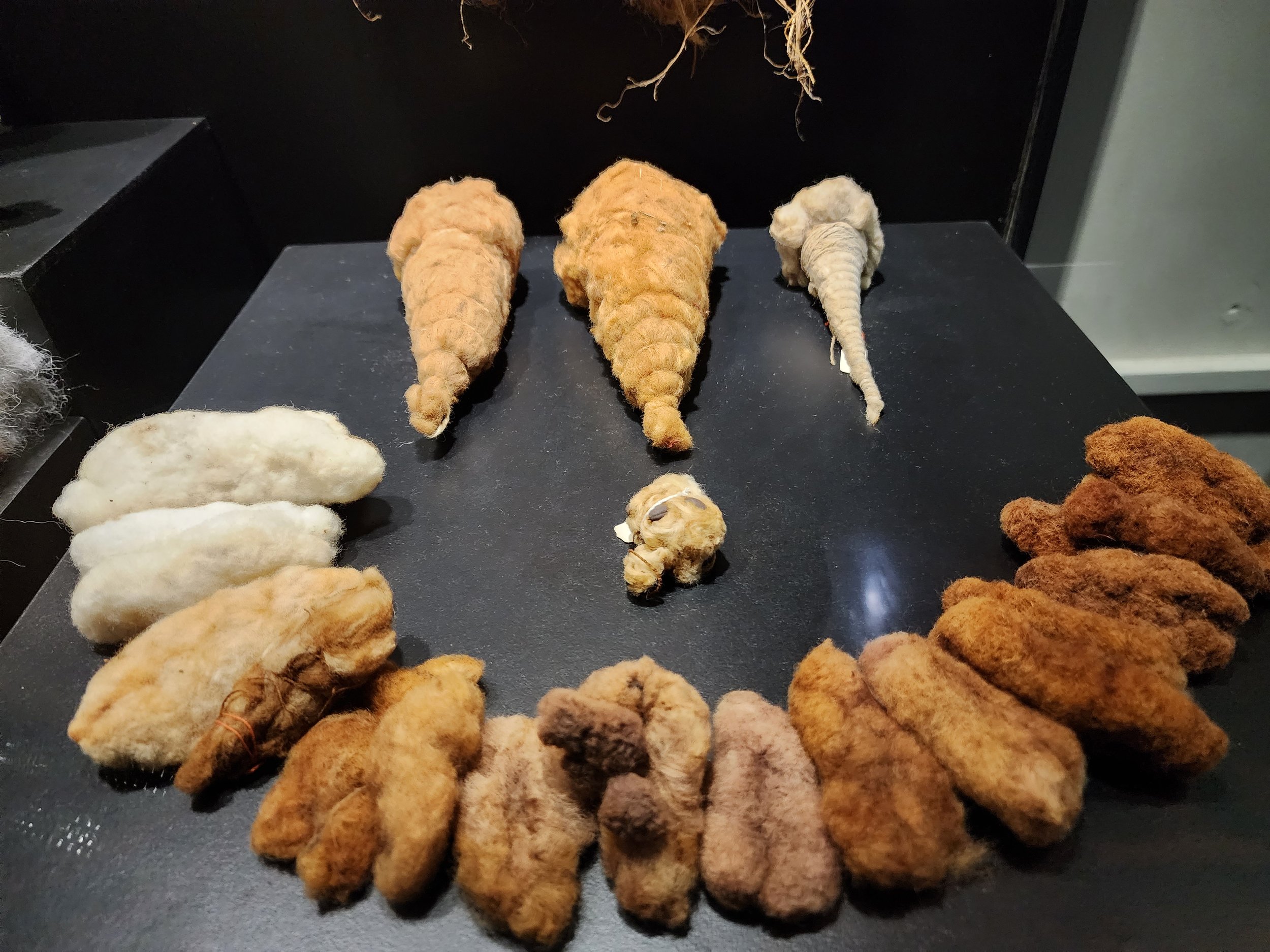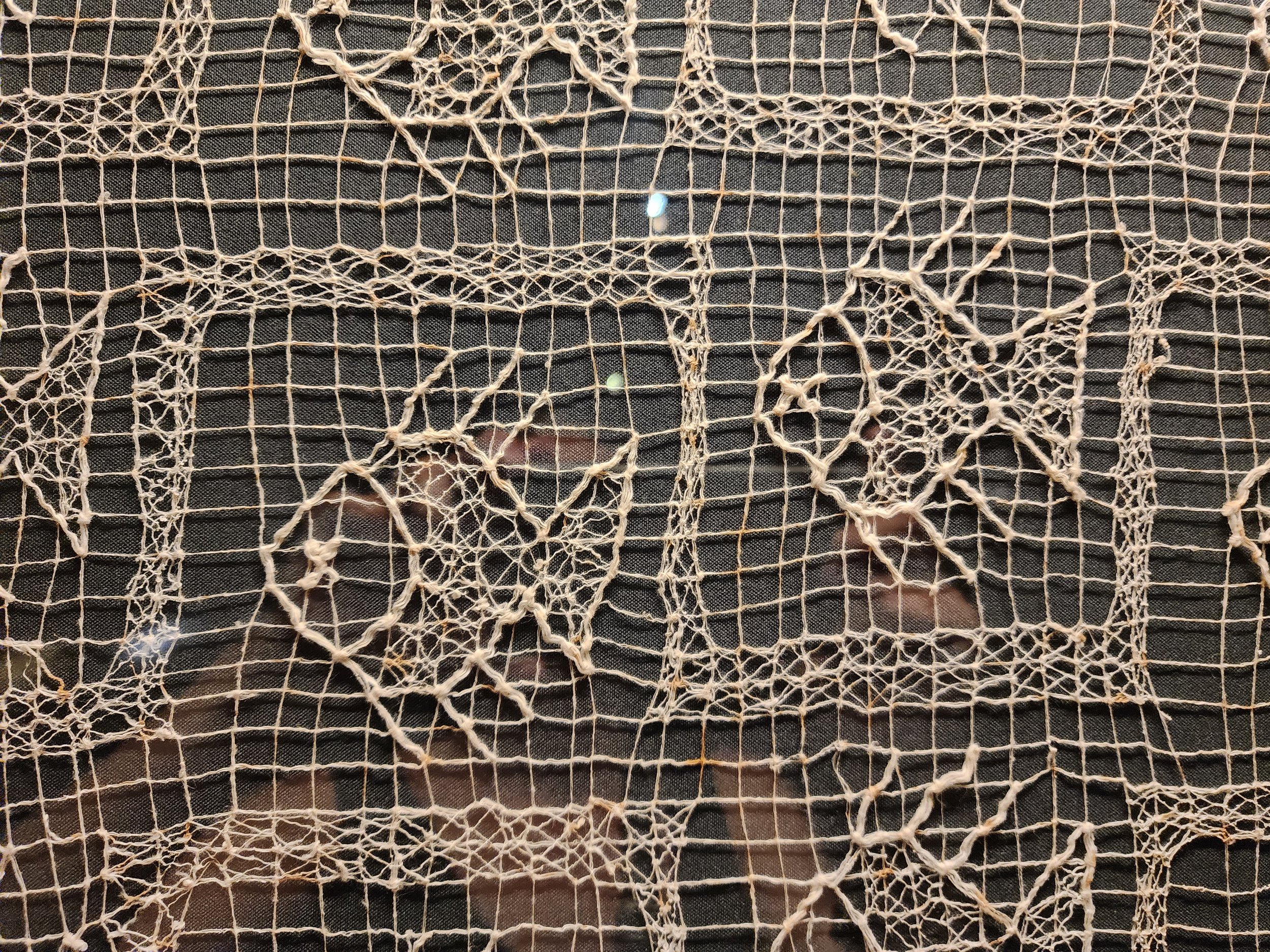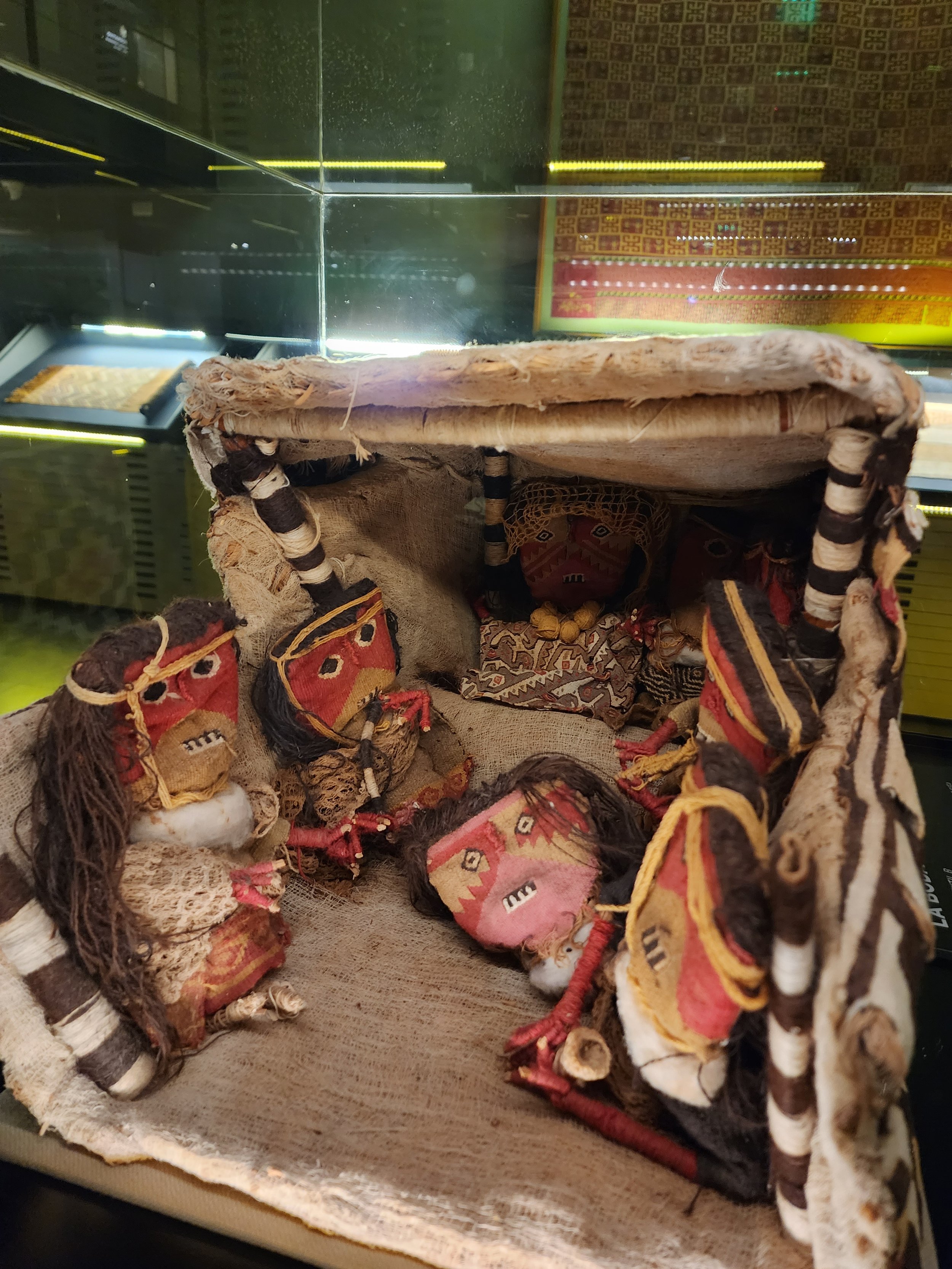THE TEXTILES OF PERU
Machu Picchu
¡Hola!
When traveling through Peru, the words that come to mind are vibrant, colorful, and ancient. As a fiber artist, historian, and former alpaca owner, I wanted to take a closer look at the people who are continuing a textile tradition that has been handed down through the generations for thousands of years. There are no written records for the transmission of skills or patterns of the Native peoples. All designs are woven from memory.
The Quechua weavers are known for their colorful and mesmerizing patterns in woven fabric. Every step in creating their textiles is purposeful. They begin with shearing and processing the raw alpaca fiber by hand. Naturally occurring detergent plants like Sacha Paraqay root & Illmanke are used to wash wool and alpaca fiber. Once dried, the fiber is spun into threads on hand spindles. Plants, minerals, and insects are collected and prepared to dye the handspun yarn. Generations of knowledge are passed down through families that dictate the direction yarn is spun, how the warp is set up, and how to create patterns for designs that befit the fabric’s purpose. The woven fabric is embedded with meaning, stories, and history.
Quechua is the language spoken by the Inca and remains one of the major languages spoken by the native peoples in the highlands of Peru. However, their traditions reach further back than the Incas to pre-Columbian times. I was fortunate to have spent a day learning about the process of creating textiles according to their traditions with two talented women from the Parobamba District. A friend and I were taken for a walk into the woods to pick leaves for a dye. Through an interpreter, the women pointed out numerous plants that were used for teas, medicines, and dyes. We were shown how to pick Ñuñunqa leaves so that the plant remains healthy and how to prepare the leaves for the dye pot. We also chose leaves for a lovely tea before getting to work.
The stove and pots were made of clay, giving off a comforting scent of burning wood in the outdoor kitchen. I dropped sample skeins into two dye pots, one with Ñuñunqa leaves making a yellow but changed to a subtle green after adding a mineral salt. The other dye was red derived from the cochineal beetle found on cactus leaves. While the leaves were doing their magic to color the yarn, spindles were brought out. I usually spin wool on a spinning wheel. Occasionally, I use a spindle but not the same type as the Andean women. They can spin standing, walking, sitting, and probably in their sleep! Let’s just say, I have a lot of practice ahead of me.
My weaving experience has been primarily with peg looms and frame looms. This past year I have been learning to weave on the inkle and rigid heddle looms. The Quechua women use a back strap loom. There are many similarities between these types of looms but the major difference I observed is in the materials used. The weavers of the Andean Highlands use what they find in nature. Nothing is manufactured or purchased ready-made. The warp is set up in a specific manner of color on wood stakes, pounded into the ground with a large rock. Wood poles and sticks are used for the frame, shed, pick-up stick, heddles, and shuttles. An alpaca bone is used to separate yarns and packing picks or rows of woven thread.
One end of the loom is tied to a post or other stationary object and the other end is attached to a woven strap that goes around a person’s back and is attached to the bottom wood beam of the loom. The tension is controlled by the movement of the weaver leaning forward or backward. After all the preparation, the magic begins. I cannot adequately describe the weaving abilities I observed, much less attempt to replicate them! The patterns are memorized, and their fingers work faster than my eyes can track the individual strands of yarn they pick. [See video] It was like magic. Patterns emerged in beautiful arrangements of color and design, drawing from ancestral traditions as they weave. The Andean culture is a textile artist’s dream. The tradition, expertise, beauty, and quality of the work is beyond remarkable. If the opportunity to visit Peru arises, I highly recommend it.
Here are the most memorable textile activities and places I experienced during my trip to Peru:
1) The Center for Traditional Textiles of Cusco. < https://textilescusco.org/>This center was established in 1996 by a group of Chinchero weavers to breathe new life into the weaving traditions that were slowly being forgotten. The weaving center is led by author and Quechua master weaver Nilda Callañaupa Alvarez.
2) Weaving Workshop – Experience the Magic of Andean Textiles booked through TripAdvisor (Peru Private Tours) < https://www.tripadvisor.com/AttractionProductReview-g319822-d17418671-Experience_the_Magic_of_Andean_Textiles_Weaving_workshop_Cusco-Chinchero_Cusco_Reg.html>
3) The AMANO Museo Textil Precolombino. < http://eng.museoamano.org/exhibitions/ > This museum highlights pre-Columbian textiles from the private collection of Mr. Yoshitaro Amano. Though the museum is small, I spent hours exploring the development of weaving on display.
Thank you to Wade Gease, aka The Alpaca Guy, for the work you put into offering an exciting and educational experience highlighting the best of Peru. <https://www.thealpacaguy.com/peru-trips-c1igg>
Quechau Weaver near Cusco, Peru

